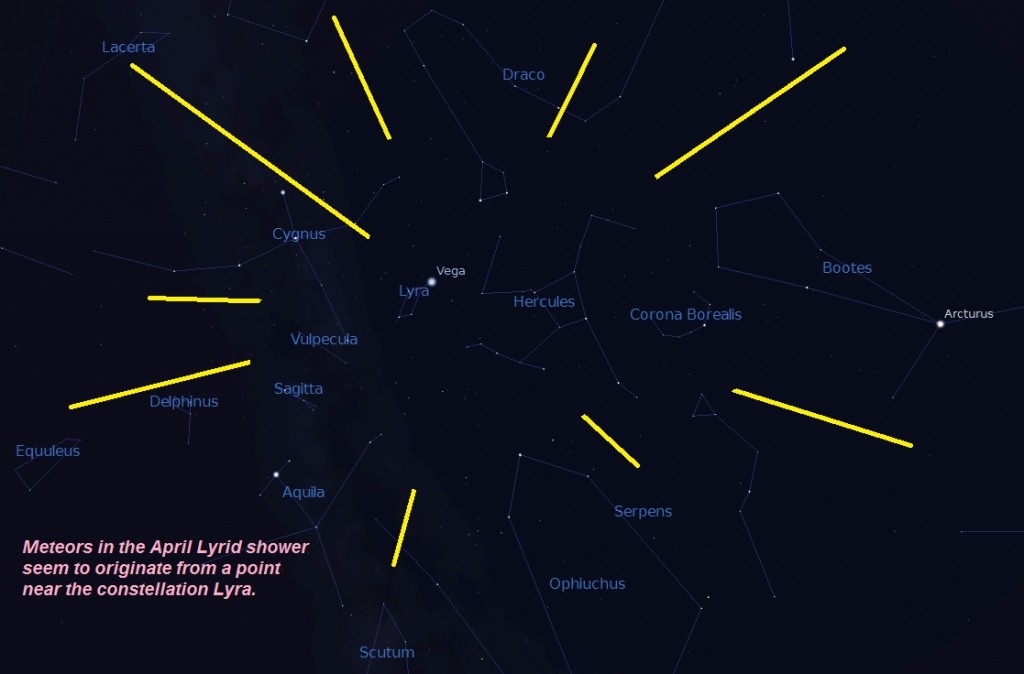¡SkyCaramba! Weekly astronomy blog for the week ending April 25, 2015
This week, the earth moves through the trail of old comet dust left behind by Comet C/1861 G1 Thatcher. The resulting meteors seem to be coming from the constellation Lyra, so they are called Lyrid meteors. To avoid confusion with another Lyrid meteor shower that occurs another time of year, this one’s sometimes called the April Lyrid shower. The other one is then called the June Lyrids.
The April Lyrids don’t often leave trails. But sometimes they produce big fireballs. The meteors travel about 30 miles per second and are considered to be of medium speed. This shower’s peak is broad which is a way of saying you might see many meteors on several nights in a row. A shower with a narrow peak might last just a few hours. You could see up to 20 per hour for a few nights around April 23.
The best viewing is from the northern hemisphere after midnight. That’s because Lyra is a northern hemisphere constellation that rises in the mid-evening hours. You could still see some Lyrids before the constellation has risen or even if you’re too far south to see the constellation at all. But it will be harder to trace their paths back toward Lyra to be sure you saw any Lyrids.
Let’s decode the long complicated name for the comet that spawns the April Lyrids. A professor named A.E. Thatcher discovered it on April 4, 1861. The reasons for Thatcher and 1861 are obvious then. Giving each half-month an alphabetical letter starting with A for the first half of January, we arrive at G for the first half of April. The numeral 1 right after it indicates it was the first comet discovered during that period. The letter C right before the year is a designation given to long period comets (200 or more years to orbit). Comet Thatcher orbits in 415 years.
The comet has dropped hints of its presence through the annual meteor shower for thousands of years. The Chinese documented the April Lyrid meteor shower as long ago as 687 B.C. Prof. Thatcher discovered it when it was close to its last perihelion in 1861. It will be back around 2276. At its closest to the sun, Comet Thatcher is about 0.92 astronomical units (earth-sun distances) from the sun. So it’s slightly within Earth’s orbital distance. At aphelion, it’s about 110 astronomical units away. That’s more than three times as far out as Neptune.
When people talk about spring showers, they’re usually talking about rainfall. But now you can talk about a spring meteor shower. If you’re in the southern hemisphere, don’t be put off by the northerly bias here. Call it a fall shower!
¡SkyCaramba!
